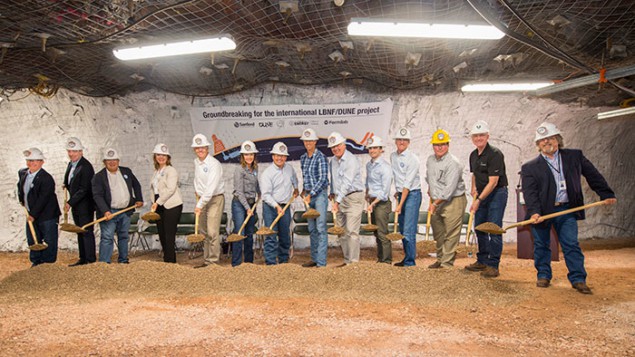
Construction has begun on a huge neutrino facility located at the Sanford Underground Research Facility in Lead, South Dakota. The Long-Baseline Neutrino Facility (LBNF) will study the properties of neutrinos in unprecedented detail, as well as the differences in behaviour between neutrinos and antineutrinos. Institutions in 30 countries are involved with the LBNF, which will take about a decade to build and once complete will be the world’s highest-intensity neutrino beam.
The centrepiece of the LBNF is a four-storey-high neutrino detector – dubbed the Deep Underground Neutrino Experiment (DUNE) – that will be built almost 1500 m underground in South Dakota. The detector is made up of four tanks that are each filled with 17,000 tonnes of liquid argon.
Underground journey
DUNE will measure the neutrinos that are generated by Fermilab, which lies around 1300 km away just outside Chicago. Fermilab will accelerate protons before smashing them into a piece of graphite. The particles that emerge from these collisions will go into a 200 m-long tunnel and decay into neutrinos. The neutrinos will first arrive at a “near detector” at Fermilab, where the beam will be characterized before heading on a 1300 km journey underground to DUNE. The neutrinos then interact with the liquid argon, which produces electrons that can be easily measured.
“The start of construction on this world-leading science experiment is cause for celebration, not just because of its positive impacts on the economy and on America’s strong relationships with our international partners, but also because of the fantastic discoveries that await us beyond the next horizon,” says US energy secretary Rick Perry. “I’m proud to support the efforts by Fermilab, Sanford Underground Research Facility and CERN, and we’re pleased to see it moving forward.”



